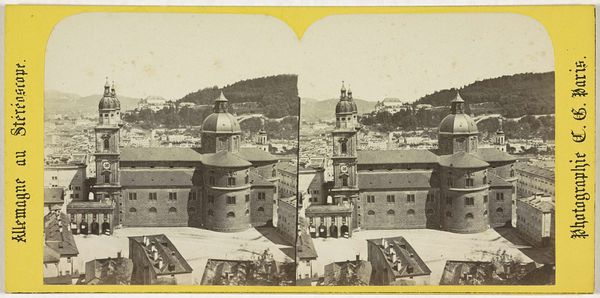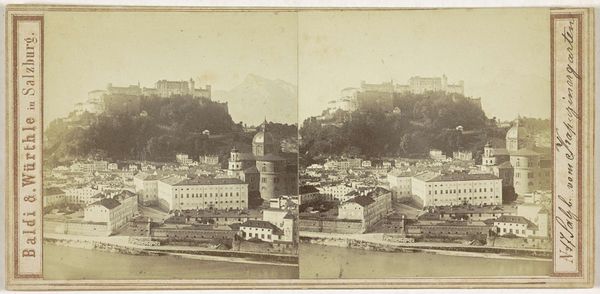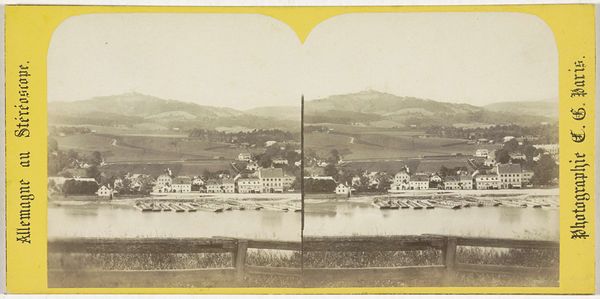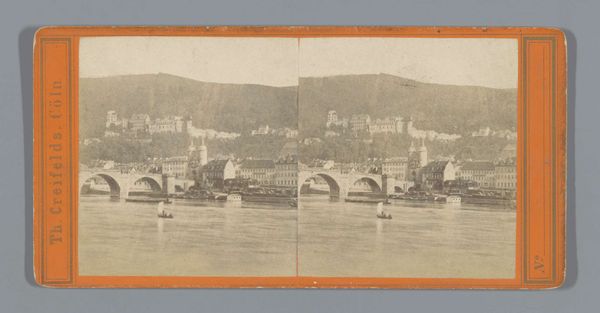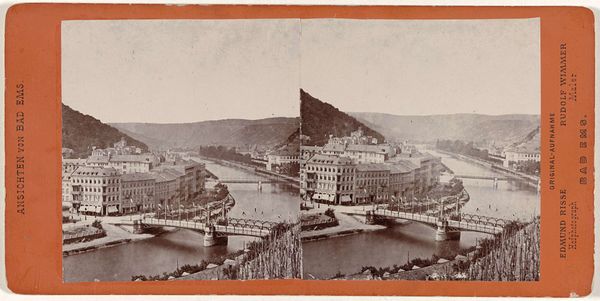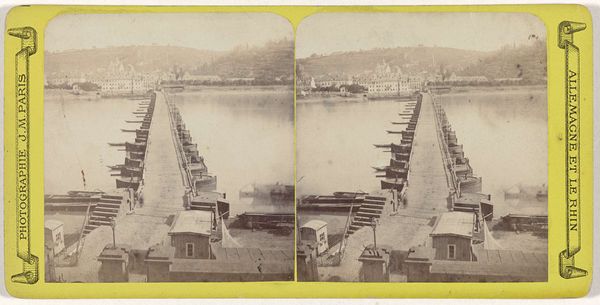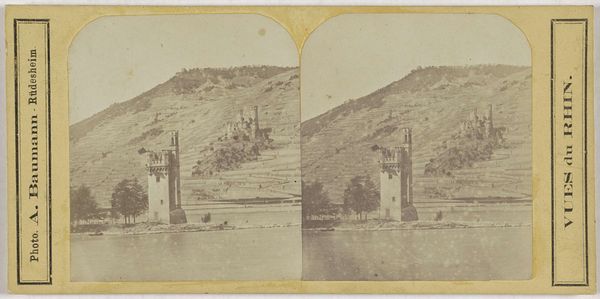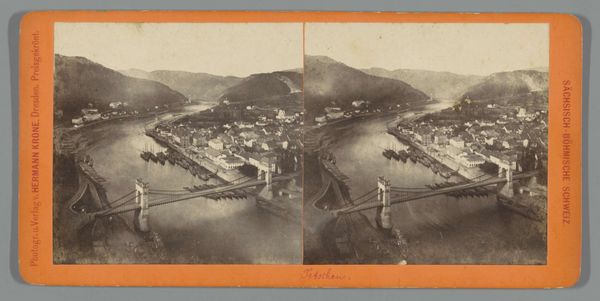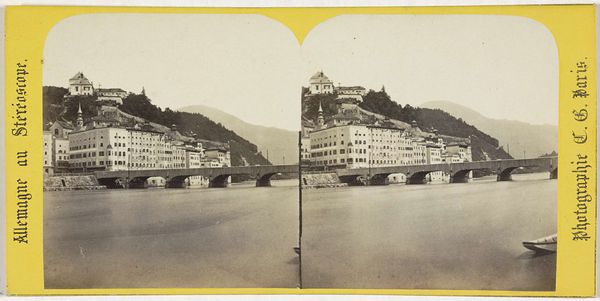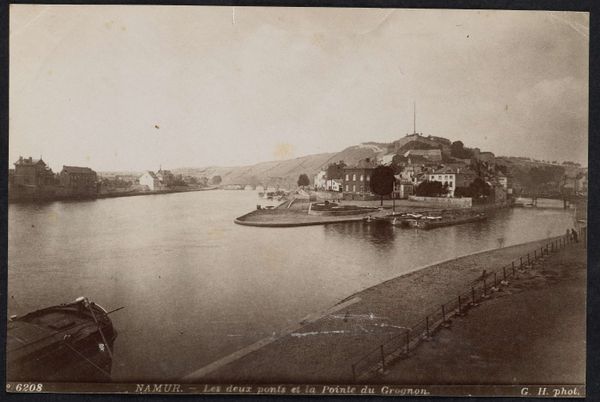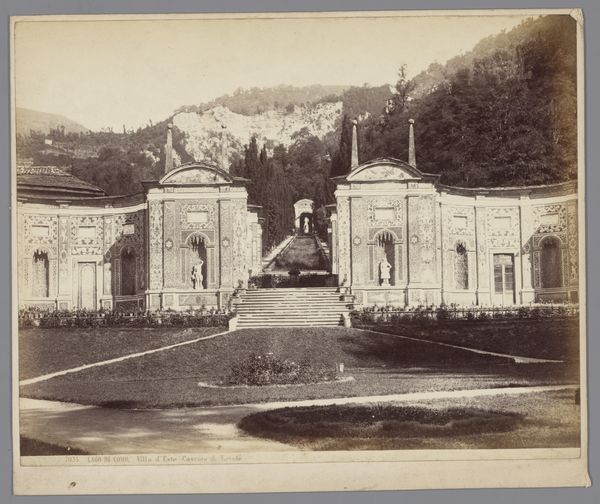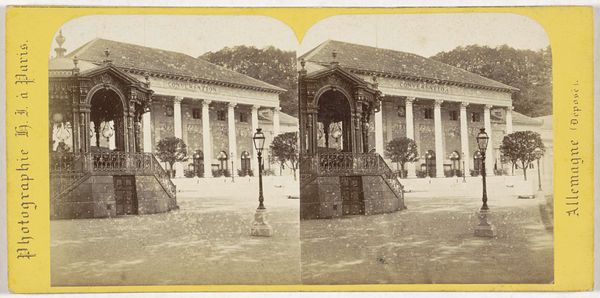
Oude brug over de Neckar bij Heidelberg en de Heilige Geestkerk in Heidelberg, Duitsland 1860 - 1865
Dimensions: height 86 mm, width 176 mm
Copyright: Rijks Museum: Open Domain
This stereoscopic image shows a view of the old bridge over the Neckar at Heidelberg, taken by Hippolyte Jouvin. The photographic process was still relatively new, but rapidly becoming industrialized; this example would have been made by first exposing a glass plate negative, then using that to make a print on paper. What's interesting here is how photography intersected with older traditions of printmaking. Stereoscopic images like this one, which create an illusion of three-dimensionality when viewed through a special device, were a popular form of entertainment. It was like having a postcard, travelogue, and immersive experience all in one. But unlike a unique work of art, this image could be reproduced endlessly. This changed not only how people viewed the world, but also the economics of image-making. It shifted value away from the singular skilled act, towards mass production and distribution. So, even a seemingly straightforward photograph has a complex story to tell about labor, technology, and the changing nature of art itself.
Comments
No comments
Be the first to comment and join the conversation on the ultimate creative platform.
